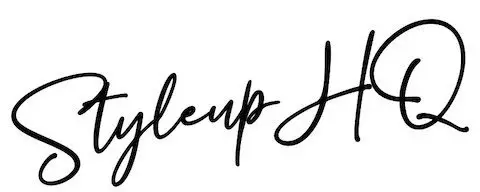Is Apple Watch BPM Accurate? [We Find Out!]
Apple Watch is an expensive purchase compared to other smartwatches. Aside from its brand and iPhone compatibility, it also features a heart rate monitor. But before you make its heart rate monitor your sole reason for buying an Apple Watch, you must know whether its BPM reading is correct.
Apple Watch BPM is accurate enough for practical purposes but is medically inaccurate. Because the reading is taken from the skin and a tighter watch strap can interfere with the results, it is advisable not to consider your Apple Watch BPM as reflective of your cardiac health.
This article covers the exact accuracy percentage and what you can expect from different Apple Watch Series in terms of heart rate monitoring. By the end, you will know to what extent your apple watch is right regarding your BPM, what you can use the average Apple Watch BPM for, and how you can improve the accuracy of the Apple Watch heart rate monitor.
Can Apple Watch Misread Heart Rate?

Apple Watch can misread heart rate if it is tied too tight or too loose. It needs to touch your skin for its sensor to pick up on the underlying blood flow. When the watch is too loose, there isn’t sufficient contact to detect the data.
When it is too tight, the Apple Watch restricts the blood flow in your wrist and takes a false reading. The watch must be a snug fit for good reading. Does this mean you need to obsess over how your watch fits? Not really! You can simply take your baseline heart rate from a professional monitor and consider the difference in your Apple Watch heart rate reading.
The Apple Watch can be off in its heart rate reading but is off with a degree of consistency. If it is 20 bpm lower than your actual heart rate, you can simply add 20 bpm whenever you look at your heart rate during the day.
How Accurate Is the Apple Watch Heart Rate?
Apple Watch is accurate enough to track sharp increases and dips but is not accurate enough for medical diagnosis. It has the highest heart rate accuracy of all wearables yet fails to give correct readings over 34% of the time.
This means you can use your Apple Watch bpm reading as trivia and point of interest tracking your sleep, rest, and exercise. But when it comes to medication and heart patient fitness, the Apple Watch can be misleading.
Apple Watch 7 Heart Rate Accuracy
Apple Watch Series 7’s heart rate monitor has an accuracy rate of 34% overall, according to a series of academic trials. This means that of every 100 readings taken, 34% are accurate enough for medical use. So, you can’t use your Apple Watch Series 7 heart rate monitor for medical purposes.
That’s because aside from giving a wrong heart rate measurement, the Apple Watch’s bpm can be significantly off the mark. You cannot assume that the smartwatch’s reading of your heart rate is as valid as clinical equipment.
How Accurate Is the Apple Watch 7 BPM?
Apple Watch 7 bpm might be off by 34 beats per minute for every 100 beats. It can also be wrong 34 times for every 100 readings you take. Despite being the closest to medical accuracy among smartwatches, Apple Watches still have a long way to go before being medically accurate.
Please note that this doesn’t make the Apple Watch’s heart rate sensor useless. There are still many ways you can use Apple Watch’s heart rate reading:
- Tracking exercise intensity – While your starting heart rate and your post-exercise heart rate might not get measured very accurately, the spike in your heart rate will be tracked quite fairly. You can use your Apple Watch to see how much your heart rate has gone up during a workout.
- Noting meditation performance – When you meditate to calm yourself and slow down, your heart rate is supposed to decrease. You can see the effectiveness of different meditation techniques by seeing which ones can create the biggest dip in your heart rate.
- Sleep quality monitoring – The human heart rate doesn’t stay the same throughout the sleep cycle. Your heart rate goes down to 40 beats per minute in some cases. While your Apple Watch might not record 40 or 50 bpm, it can show a close enough reading to indicate that you did sleep well. You have to track the contrast between your heart rate on the Apple Watch during the day and at night.
How Accurate Is Apple Watch Heart Rate Series 3?
Apple Watch Series 3 is not accurate to a medical standard but takes a practical reading that can be used for tracking exercise performance, sleep quality, and overall cardiac rhythms. If your exercise equipment comes with a heart rate tracker, you should prefer it over your Apple Watch.
There are two reasons to prefer your treadmill or spin cycle’s heart rate monitor instead of your smartwatch. Firstly, the reading is closer to medical standards, and secondly, it doesn’t waste battery life. Apple Watch’s heart rate monitor isn’t at fault because it takes a slightly off reading. It is at fault because it uses up to 30% of the battery in the process.
How Accurate Is Apple Watch Heart Rate SE?
The Apple Watch SE has over 30% heart rate tracking accuracy, which is much higher than standard wearables. Still, the watch is medically inaccurate for well over 50% of the time. It calculates your heart rate.
The Apple Watch SE isn’t any better or worse at reading your heart rate than any other recent Apple Watch. Ultimately, wearables are limited to taking your heart rate from your skin, and the tightness of the loop affects the reading.
There is no universally agreed fit, which makes it hard to design a heart rate reading algorithm that would be uniformly accurate. Even the same person wearing an Apple Watch over 100 times would get wrong readings over 50% of the time.
How Do I Make My Apple Watch Heart Rate More Accurate?
You can make your Apple Watch heart rate more accurate by wearing the watch tight enough but not too tight. Avoid restricting blood flow with your watch strap but make sure your watch base is firmly pressed against your skin. This will get you a more accurate heart reading.
Generally, you have one of two issues that result in heart rate reading inaccuracy. The first is that you wear your watch too tightly, and the second is the opposite. If you wear your watch too tightly, try wearing your watch slightly loose, even if it feels weird.
And if you’re used to wearing your watch loose, wearing it tightly might seem restrictive, but you have to play along. Make sure to check your Apple Watch BPM to see whether your watch is at an appropriate tightness. Knowing your natural resting heart rate can help you pinpoint the exact tautness at which your apple watch is giving a good enough heart rate reading.
How Tight Should Apple Watch Be for Accurate Heart Rate?

Your Apple Watch shouldn’t be tight enough to restrict blood flow in any way. It should simply sit on top of your wrist, and its heart rate sensor should remain in prolonged, effortless contact with your skin.
Even when your Apple Watch is worn perfectly, its heart rate monitor doesn’t generate a medically accurate bpm reading. The heart rate sensor on an apple watch is limited and can only give information that’s good for daily activity tracking and sleep monitoring. It is not meant to replace medical health monitoring devices.
One might think that though inaccurate, the apple watch can be useful for heart patients. The case is quite the opposite. Heart patients can get startled by false alarms, which is why they should turn off their Apple Watch heart rate sensor and rely on medical equipment to take relevant readings.
Why Is My Apple Watch Heart Rate All Over the Place?
Your Apple Watch’s heart rate is all over the place because you’re wearing the watch too tight, the watch is moving around on your wrist, or the sensor is malfunctioning. It is also possible that your Apple Watch sensor is being interrupted by excessive sweating or sleeve fabric.
- You’re wearing the apple watch too tight – When your Apple Watch is too tight, it starts to restrict blood flow, which gives a strained reading. In moments when the blood flow is normalized in your wrist, there can be a sudden dip in the reading.
- You’re wearing the Apple Watch too loose – When your Apple Watch is loose, it takes sporadic readings that keep getting interrupted by the watch’s movement. This creates random spikes every few minutes.
- Your Apple Watch sensor is malfunctioning – This is very rare. If you find that over 80% of the time, you get bpm readings that are unnatural, you can get your Apple Watch heart rate monitor checked.
- Your Apple Watch Sensor keeps getting interrupted – From your sleeve dangling between the strap and your skin to your sweat forming a layer beneath your watch, multiple factors can contribute to erroneous BPM readings. Consistently “all over the place” readings shouldn’t be taken seriously. But if your Apple Watch generally gives reliable BPM readings and sends a sudden spike notification, you might want to get your heart rate tested on a medical device.


![Are Watches Obsolete? [The Latest Trend Reveals This!]](https://styleuphq.com/wp-content/uploads/2022/03/pexels-antony-trivet-9982586-1200x800.jpg)
![Can Shoes Be Washed in a Washing Machine? [Full Guide!]](https://styleuphq.com/wp-content/uploads/2023/09/washing-dirty-shoes-in-the-washing-machine-2021-09-01-01-19-01-utc.jpeg)
![How to Pack Perfume Bottles? [The SAFEST Way!]](https://styleuphq.com/wp-content/uploads/2021/03/still-life-1460067_1920-light-1200x800.jpeg)

![Does Apple Watch Delete Messages? [Here’s What to Do!]](https://styleuphq.com/wp-content/uploads/2022/05/Apple-Watch-Screen-with-applications.webp)